Esteban Toro’s new episodic short-format travel film, "Aperture: A World of Stories," is a beautiful watch. On top of the eye-candy, Toro’s film also provides some very valuable insights into and tips for filming internationally.
Toro’s new series is broken down into five episodes of roughly 10 minutes per episode. Each episode takes time to explore the people and culture of the destination at its heart. Toro's "Aperture" also provides the aspiring travel photographer with some interesting behind the scenes and tips to plan your own expedition. Perhaps even more valuable, Toro frames each episode by sitting down with Brent Lewis, Photo Editor of the New York Times, and Scott Gray of the World Photography Organization.

Toro's Aperture: A World of Stories
Toro’s Partners
Toro’s films were produced by Sony. So, Sony and his other partner, Hahnemühle, are featured in the series.
Toro and Sony
Given his current affiliation with Sony, my first question for Toro was what cameras has he used throughout his career. Over the years, Toro has used Nikon, Canon, and Hasselblad.

Given such a wide range of camera experiences, I asked Toro to explain how he initially connected with Sony. While traveling in Vietnam, Toro received an email from Sony’s marketing department asking if he’d like to try out their gear. At the time, he was shooting with Nikon and didn’t have much experience with Sony. He agreed to take some Sony mirrorless equipment and put it through its paces on the condition that if the gear didn’t live up to his expectations, Sony would take it back. As a travel photographer, Toro needs to depend on his gear working through some extreme conditions. According to Toro, Sony was confident their gear would impress Toro. After a few months of testing, Toro agreed. Toro has been a Sony ambassador ever since.

Toro and Hahnemuhle
Toro is always eager to show off his prints and talk about the process of printing. You can see his conversation about prints with Lewis and Gray in episode three, "Traditions," as well as an in-depth discussion of printing in my recent article on Toro’s printing process.
In a digital age, Toro is enthralled with the physical print. Toro equates a print to seeing the act of creation all the way through. From the subject, to your lens, to the camera, to your eye is only part of the equation. Putting the color and depth of your image onto paper is what Toro calls the real final image. As we discussed before, Hahnemühle’s rag paper is Toro’s go-to paper.
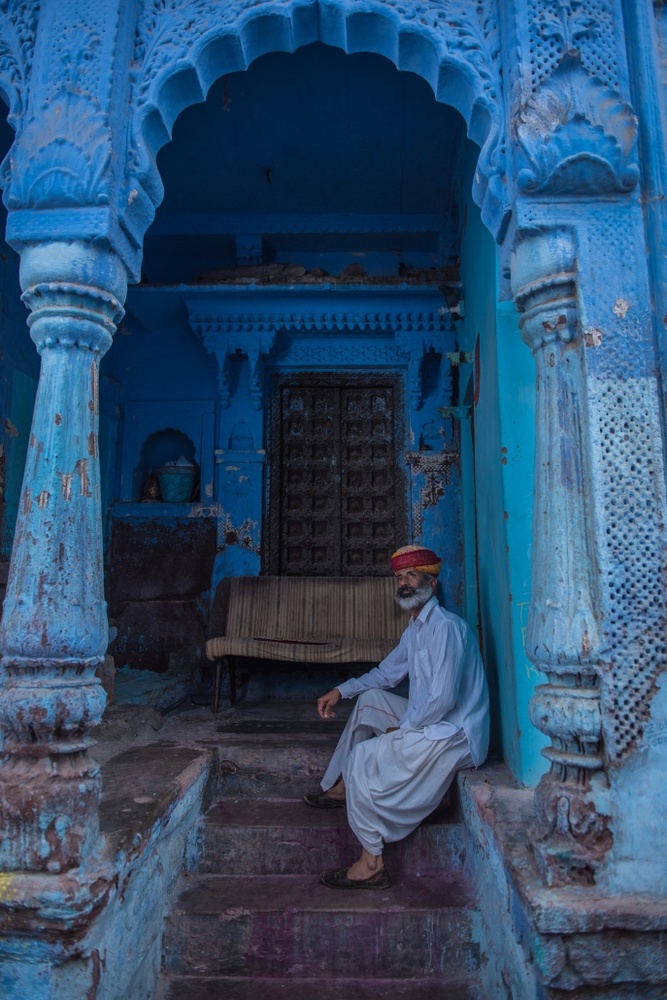
Why Travel Photography
I’m a lover of culture-centric travel photography, and so, I was curious as to what drew Toro to the genre. Toro’s answer was empathic:
Permission to see people and places!
Toro explained that he was relatively shy until he found photography:
Photography pushed me to start living.
In order to take the photographs he wanted, Toro had to seek out new experiences. Basically, for him, that meant going outside of his comfort zone to meet new people:
Photography is an excuse for me to go out and understand the world.
In terms of the nuts and bolts of the genre, Toro is effusive that travel photography lets him take images of whatever strikes his fancy. Travel is such a wide genre for Toro that he can switch from taking portraits, to landscapes, to still life, and back, depending on what piques his curiosity.

Cinema Versus Photography
"Aperture" is incredibly cinematic. You’d swear that Toro was really a filmmaker at heart. I asked Toro if he sees a distinction between photography and cinema: if he had to choose one format or the other, where would he land? For Toro, photography is his true passion. For him, the challenge of finding one story, in one frame, in one moment, is the challenge that he loves the most — a bit of an Aristotelian unity, if you will.
Logistics
Concept
For those of us who are working on or want to work on an epic travelogue like "Aperture," Toro’s openness to discuss his methods is gold.
Originally, Toro intended his "Aperture" series to be a set of very short installments. He actually envisioned each episode to clock in at the minute mark. However, when he was in the planning stages, he realized that the places he was traveling deserved more screen time.
As the dominos fell into place, Toro also realized that if he was going to create a longer series, he’d need some kind of hook to run throughout the series to tie it all together. This is when he reached out to Lewis of the NYT and Gray of the WPO. Acting as a constant from episode to episode, Toro talks to Lewis and Gray about his photos as a way to establish and then dive into each location.
Research
With the world getting smaller and more accessible, I was curious about how Toro selected his locations:
We had so many options. But I decided I wanted to focus on India, as it was a place that I knew. India brings you many unique chances to create beautiful pictures.
Once Toro selected his locations, he would often use local fixers or producers to help coordinate his shoots. For Toro, his local fixers were people he could rely on to help find the right location and to get him out of trouble. As many of us know, photographers can often be targets for scammers, touts, or worse, thieves. A local fixer will have more experience and can help you assess your risks. A fixer can also help you determine when you should put your camera away, when certain locations and moments just aren’t for photos.
On the positive side, fixers can also help facilitate certain shots or opportunities. For example, Toro takes the time in "Aperture" to explain in detail that without his fixer’s experience at one particular temple, he would have had no idea that monks are often late for mess hall. Knowing this allowed him to prepare for the moment that turned into the image of a monk running to eat.
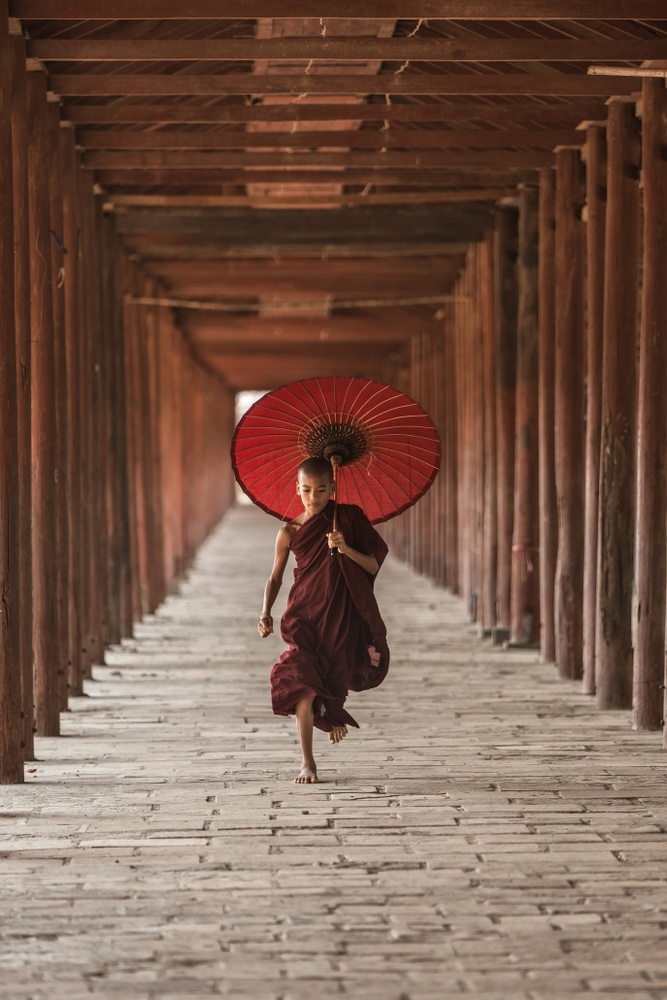
With the help of a local fixer.
Difficulties
Again, as an experienced traveler, I’ve found myself in some difficult, dirty, if not dangerous situations. It comes with the territory. So, I was curious what locations provided Toro with the most trouble.
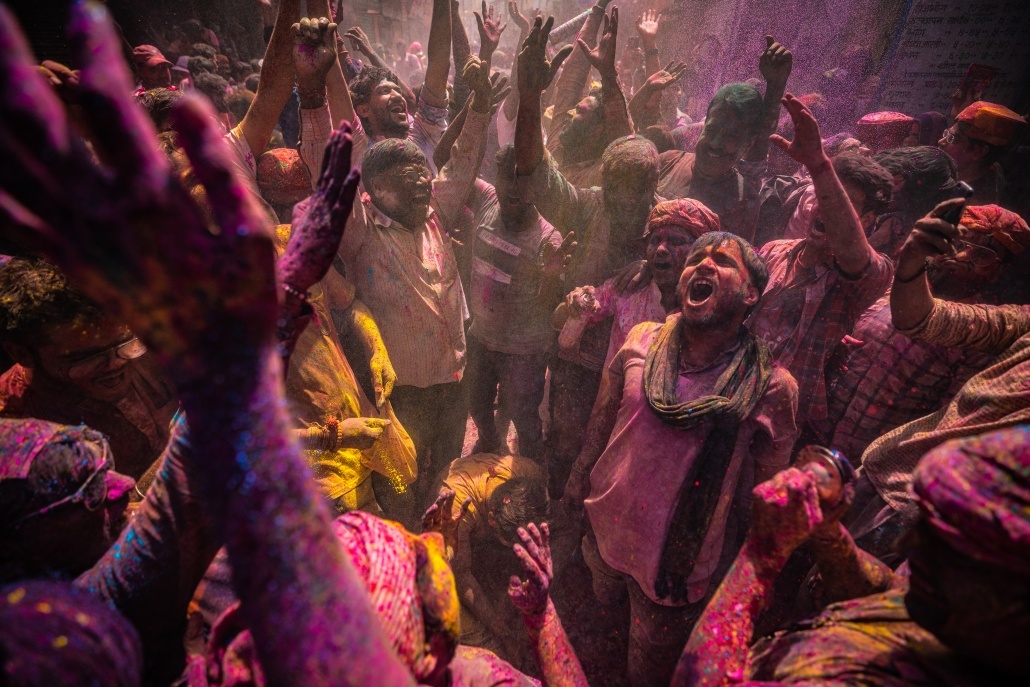
Although Toro had visited the Holi Festival in previous years, shooting "Aperture" was the first time he took a camera into the mayhem of the temple floor.
I actually felt fear. As soon as it starts, you realize you can’t control anything. I couldn’t even look through my viewfinder. I had to imagine what it would look like and use my experience and intuition to frame shots while dodging water, powder, and beatings.

The Taboo Topic of Paying for Access
Second to Holi, Toro had a hard time getting the photographs he wanted in Varanasi. To put it plainly, there are some places in the world that photographers just aren’t freely invited. Anyone can stand on the public ghats along the Ganges, but there are a lot of places that are off-limits
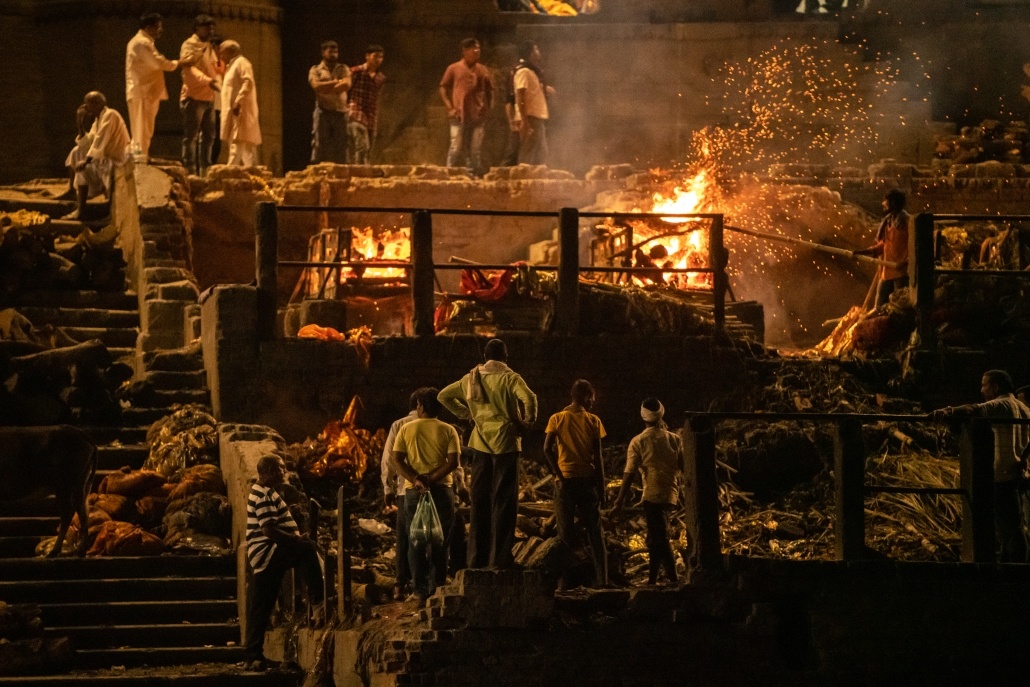 While trying to get inside the crematoria, Toro was told he had to pay or leave. Confronted with this information, Lewis states in no uncertain terms that the NYT has a policy of not using photos that are the product of any kind of pay to play. Essentially, if you have to pay for access, the NYT, along with most (if not all) other newspapers, will decline your photos.
While trying to get inside the crematoria, Toro was told he had to pay or leave. Confronted with this information, Lewis states in no uncertain terms that the NYT has a policy of not using photos that are the product of any kind of pay to play. Essentially, if you have to pay for access, the NYT, along with most (if not all) other newspapers, will decline your photos.
Toro and I talked about this at length. The crematoria along the river is pretty much inaccessible to anyone other than locals or the direct relatives of those being cremated. As restricted to the public as it may be, these places do hold international interest. Try as he might, Toro could not talk his way in. No explanation of his project was enough. So, like many others, Toro paid.
This practice is frowned upon by journalism, but without payment, (almost) nobody gets in. I’m not sure I can side with the NYT here. I’ll pay to get into one of Canada’s National Parks. I’ll pay to have the only tour company permitted to operate in certain parts of Wapusk National Park take me to see the polar bears. I’ve paid to get into churches, I’ve made "donations" or bought trinkets to take portraits, and I’ve happily paid the foreigner's price to get into events abroad.
I understand the slippery slope argument: pay here, and every photojournalist everywhere will have to pay. But most of us already pay for access to innumerable Western or other established places. Why is it different here? Why can’t a photographer pay what amounts to a nominal fee to get into restricted areas? This conversation could spiral out of control and so would likely be better saved for another day.
The Taboo Topic of Setting Up Cultural-centric Travel Shots
Similarly, while talking with Gray, Toro explained that some of his shots are styled or semi-styled. Posing travel photography is also a bit of a taboo subject. Should a photographer ask someone to pose or should they be restricted to only taking spontaneous, journalistic-type photos?
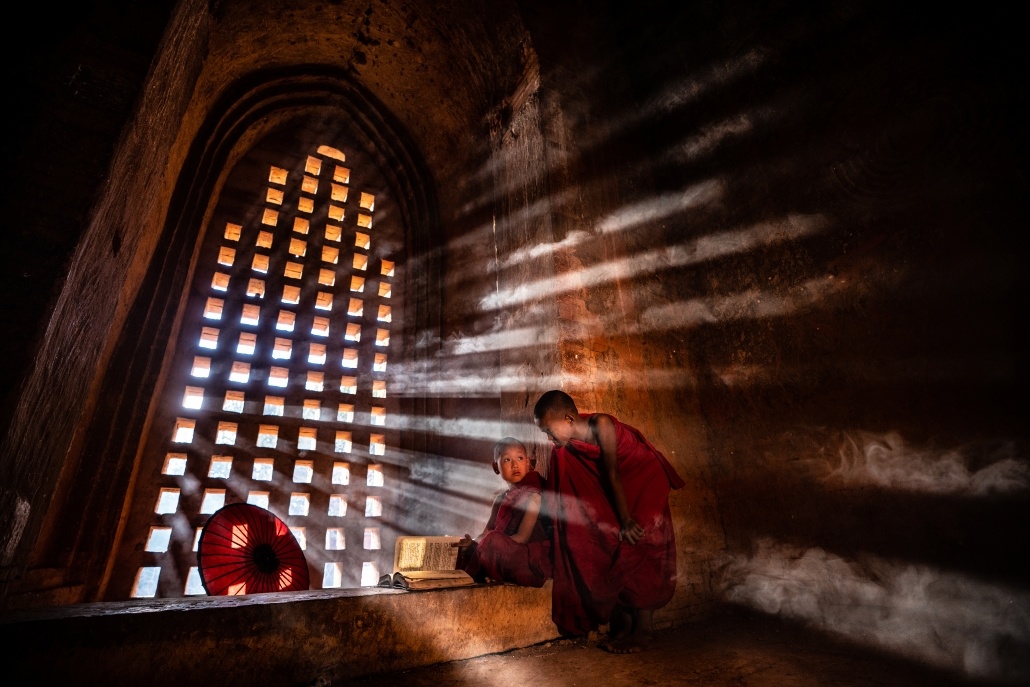
Toro explained to Gray that his images are often made up of a combination of natural and styled components. For example, while shooting in a temple, Toro noticed the light and dust coming from a particular window. He asked the monks to move from where they were reading to sit in the window. He also asked them to continue their studies, without further posing instruction.
In our discussion, Toro also explained that there are certain instances when he will take subjects to particular locations and even ask them to look in a certain direction, but will otherwise keep his direction to a minimum. As Toro put it:
...a spontaneous way of looking.
Toro agrees that this isn’t pure photojournalism. But, he also suggests that even photojournalists are already controlling a shot when they pick a particular lens to use. Not just that, but the photojournalist is always deciding where to point the camera.
You are already editing and controlling a shot when you pick a camera and lens. You are deciding what to show and what not to show.
This begs the question: are posed photos of different cultural moments exploitative? Can they ever be photojournalism? Is unbiased cultural photojournalism even possible?
Learning From Industry Leaders
Getting advice and input from industry leaders like Lewis and Gray and then sharing it with his followers in "Aperture" is generous. As a follow-up, I asked Toro what he learned from his time with Lewis and Gray:
Be bold and share your images. Tell your stories.
Beyond that, Toro explained that, because Lewis is a photojournalist and Gray is a fine art collector, responses to any particular image are often dependent on who you are sharing your work with. Toro suggested that you have to find your passion and work for yourself. If your works fits with the NYT or attracts the attention of a fine art collector, great. If not, keep shooting your own stories. Eventually, your work will find a home.
This kind of attitude reminds me of Steve Martins’ comment:
Be so good they can’t ignore you.
What’s Up Next
With the first series of "Aperture" in the can, I was curious where Toro was going to head next.
Time is short, and I still have many places to photograph.
Toro hopes he can make his second season of "Aperture" in a slightly longer format. He’s aiming to produce episodes as long as 30-40 minutes each.
Toro said he has ideas for locations and will be beginning pre-production in later September, but intends to keep the locations a surprise.
Can’t wait.
All images used with permission of Esteban Toro.






I really wonder how no one else here finds it "shocking" to see a travel photographer showing us staged images and calling it photojournalism........ And being endorsed by big brands.
Thanks, Etienne, this is the conversation I wanted to have!
Keeping in mind, "Toro agrees that this isn’t pure photojournalism." It's more of a blend of fine-art and photojournalism.
I think a deeper dive into travel photography and travel-journalism shows that there isn't much that is pure photojournalism. I was blown away by the moment that the NYT realized they've likely run images that were obtained by paying for access.
Mark, I am uploading a video on my Youtube channel that reacts to this article. I have been talking about these issues for years and felt I needed to react to this one. If you'd like I will send you the link once I have uploaded it.
https://youtu.be/-rIMS7PgWRw
Etienne, I also left this comment on your YouTube channel.
Note: I've edited my response to tone it down a bit)
Sorry that your blood started to boil. The things you talk about were in part the conversation I wanted to generate with my article. However, as a blogger or journalist, you should have reached out to me and Esteban for comment.
Calling someone a liar is a big deal. I believe you should have reached out to discus this. In the Fstoppers forum, I thanked you for your comment and I responded to the meat of your comment as well. You don't have to respond at all in MY forum, but, you shouldn't decide to throw around pejoratives without reaching out to to me or Esteban somewhere.
More specifically: The article states: "Toro explained to Gray that his images are often made up of a combination of natural and styled components. For example, while shooting in a temple, Toro noticed the light and dust coming from a particular window. He asked the monks to move from where they were reading to sit in the window. He also asked them to continue their studies, without further posing instruction." The article is VERY clear that Toro moved the monks. The video is also VERY clear that the monks in the window shot is staged.
Re: Dust vs. Smoke - I don't believe that english is Toro's first language. It could have been miscommunication.
The NYT portion of the videos (and in my article) include a discussion with Toro about what journalism is. You're being disingenuous by conflating the discussions about fine art and (fashion if you will - which I feel is another pejorative) and photojournalism. He is clear when he talks to the NYT about his travels in INIDA that there was an exchange of money for access. He DID NOT talk to the NYT about the monks. I feel you didn't watch the videos before you claimed BS.
I don't think that you claim to be a champion of photojournalism without spending enough time to get the journalism part of your comments correct. You have an obligation to review the materials and reach out for comment.
Hey Mark, thanks for following up on the comment and apologies for the late reply.
All right, to start with, I am nothing of a “champion of photojournalism”. I am a travel photographer (and commercial photographer and videographer on the side) and I discuss all matters related to travel photography. This article happened to discuss what I have been talking about for a long time in the world of travel photography (staging images and claiming otherwise) and it also happened to talk about photojournalism. And if there is one thing I know clearly about photojournalism is that any type of influence in the scene one photograph is out of the question.
After years of discussing these “polemic” topics, I also learned to dismiss any comment or argument that talks about me. This has nothing to do with me, whether I am a travel photographer, a journalist, a nice guy or an asshole. It is about Travel Photography, it is about the FACT that people do these things, and that it brings the whole industry to very low standards.
If these particular images are not related to photojournalism, then it is misleading to title the article” Insights For Photojournalists and Fine Art Photographers” and showcase these staged “travel” images. I also did not spend the time watching Esteban’s videos as this article was what I wanted to talk about. Not his videos.
I will repeat myself here: there is a difference between saying you “kind of staged” the shot because the monks were already there and he asked them to move a few metres and taking them out of their monastery and bringing them on location. Looking at Esteban’s Instagram I have NO doubt that these Bagan images are staged, as this is something has he done a lot in the past. I will also completely dismiss your argument that English is not his first language and he could have mistaken the word “smoke” for “dust”. It is smoke, it is staged, and it is a copy of an image that has been shot thousands of times. Details do not matter here.
Once again, I do not want this discussion to be around Esteban Toro. There is a multitude of travel photographers doing the same thing, trying to take shortcuts to become popular and not being clear about how they do it, to the point where they build “fake” stories around how they got the shot. As I said, people make mistakes, and I think exposing these people can help change this terrible trend.
For the last years I have been discussing this issue, I have received countless messages from people telling me that the were not aware this was something happening, and they will now look at these types of images with a different eye. Because the photographers shooting these images will NEVER say they staged these easy to shoot images. So they are misleading everyone. And this is wrong. So I am convinced that my work is helping some people to understand better.
I also do not see the point of getting in touch with you or Esteban and asking clarifications about something that is crystal clear. I am no journalist, I discuss the trends in the industry of travel photography, the way they are, and what people do, good or bad.
My main goal is to let companies and photography competition judges know about this trend because we see too many of these staged images that keep winning travel photography competitions. And never do they mention the “staged” fact because that would disqualify them. So people need to know. And people like the NYT should reflect on how they do things, even though I have lost faith a long time ago in the media.
Obviously there is an issue here with the way I do things. When I built my “library of fake travel photos” I had no other choice but mentioning the photographers doing these things, due to copyright issues. I wish I could discuss this without naming any photographer, but I just can’t. Unless I go myself to all these locations, shoot these same images and use my own images to show people this trend. But I simply can’t do that (even though it is a project I have).
Mark, I understand that this may harm some people one way or another. But you can’t make an omelette without breaking eggs. And I am very sorry that the “eggs” I am breaking can be very nice people. 8 years ago, when I first (and last) staged photos (which was actually in Bagan!) I would have got annoyed if someone had called me out. But it would have made me realize faster that there was something wrong with what I did (and do not get me started on the exploitation of children models….).
Believe me, I have no fun writing these articles or shooting these videos and waking up the day after reading hateful emails. It gets into my guts and I lose my appetite, it is a stressful thing to do. And I do not do this for fun or to make the buzz and gain followers. I do this simply because I believe in what I do, and I believe it will bring a positive “creative” energy into travel photography (in the very long run, unfortunately).
I hope we can continue this discussion. I am very open to change my mind about things, whatever they are. But in this case, there will be a lot of convincing to do.
Etienne - I believe I understand where you're coming from - and, not to put too fine a point on it, I'm closer in agreement to your fundamental beliefs than this exchange may imply. As I explained to Walter - "Ethically, I'm with much of what Etienne says - forcing a culture to fit my imagination of what it should be like is a problem that can cause a domino effect all the way towards creating an 'other.' Which leads to devaluing the true culture of place."
However, and this is a pretty big however, you use the term liar and you talk about BS quite a bit. Toro nor I hide the fact that the monk images were staged. How far he moved them is a debate for angles on a pin, he readily admits the image is staged. He does not talk to the NYT about the monks in the video he talks to Gray and the WPO. His conversation with WPO is not a photojournalism conversation, it is about fine art. I understand you take issue with this - and, as I stated, I have sympathy for your point of view. BUT, you're calling people out over something they never said. You say that your point is derived from a crystal clear moment in the article - but, I'd argue that the article - and the video are crystal clear that the shots are staged. To borrow your term - that's a FACT. The image of the monks in the window is under the topic heading "The Taboo Topic of Setting Up Cultural-centric Travel Shots" How much more clear can I be?
Toro does have a photojournalism conversation with the NYT. That is a separate conversation about a separate shoot. The videos and the article do offer advice to those who engage in photojournalism and fine-art travel photography (for lack of a better word). In this particular case, they do not meet in the way your YouTube essay implies. The article and the video show a series of images split between fine-art travel and photojournalism. An article or a video can surely have two different sets of 'tips' to provide. From my perspective, it's disingenuous to cherry pick images to go with a part of the title that belong with the other part.
These are the very issues I wanted to talk about - I wrote "This begs the question: are posed photos of different cultural moments exploitative? Can they ever be photojournalism? Is unbiased cultural photojournalism even possible?"
I understand your view. Again, to belabour it, I'm sympathetic to your view. I just think the way you're making your point, misrepresenting the video and the article, to make a point that the article was never opposed to, and, insulting people along the way is problematic. There may not be a way to make an omelette without breaking a few eggs, there is however a way to change people's behaviour without insulting them or cherry picking disparate parts of their argument.
As for the travel photography competitions - am also fully in agreement. I'm also tired of seeing a fisherman from either Inle or with a cormorant win year in and year out.
Right now, I am watching the video "Photographer trends that need to die" which is on Fstoppers. It is exactly the same thing. Everyone doing HDR is killing creativity. How to change that? By having photographers telling the public that it is crap, and they have to stop. I see no difference.
I agree with you. But if someone likes HDR, claims the image is HDR, I wouldn't point at them and say that they didn't say it was HDR just so I could persuade them not to shoot HDR. I may have lost that metaphor along the way.
Hi Mark, once again, thanks for your messages and explaining your point of view. I have actually realized that my video might have been made a little too quickly. I wanted to focus on the main article and the relationship between a photographer "endorsed" by the NYT and the obvious staged images with misleading descriptions in the same article. By not watching the videos (trying not to get influenced by them) I missed the fact that Esteban was only having a photo review by the nyt, and these images were not part of it.
This is entirely my bad, and I have decided to remove the video from my Youtube channel.
I will keep on the fight against the staged travel photos which are presented as candid, or even photojournalism. Once again, I hope you and Esteban understand my point of view, and I will, in the future, as much as I can, avoid naming photographers when talking about these issues.
Thanks, again, for the discussion! :)
And sorry for the late reply, we are working on a big video production at the moment.
Etienne - Thanks for taking the time to follow back up.
Esteban and I are actually working on an article / project about staged images and paying 'models' in travel locations.
I've sent you a DM here on Fstoppers and on FB. I think that your well thought out commentary would be a valuable addition.
I had a negative reaction to seeing the subject photos labeled as "photojournalism" - particularly when connected to the holy grail of objectivity, The NYTimes. But then I looked in the dictionary for the definition of journalism and it only means writing for a newspaper (including, of course, on-line 'news'). So, by the dictionary the photography is "journalism"
I think you in the profession need a new term.for the photo capture of life as-it-is. How about the old time term, CANDID PHOTOGRAPHY? Or Henri Cartier-Bresson inspired photography - shortened to á la the Facebook group, "HCB photography"?
But it is against human nature to expect people not to try every angle to make money - and misusing the term "photo journalism" when displaying posed, unnatural, paid-for photos is not the gravest of sins.
Or, on the lighter side, why not create a new professional group, the Ethical Travel Photography Society, and it could hand out "seals of approval" to authentic photo capturers of life-as-it-is.
I would like to add that I do not find it upsetting when genuine amateur photographers pay for set-ups. For many of these people, a two week trip to photograph in Myanmar, or India is the trip of a lifetime. For financial or other reasons, they may not travel again for lots of years, and to deny them a set-up they can keep as an "accomplishment" and show their friends would not be a nice thing to do.
Thanks for the thoughtful comment. I appreciate that.
As I was saying to Etienne, this is the conversation that I wanted to have! To talk about what photojournalism is and why or why not it has a place in travel photography. I'm not convinced that it always does.
Ethically, I'm with much of what Etienne says - forcing a culture to fit my imagination of what it should be like is a problem that can cause a domino effect all the way towards creating an 'other.' Which leads to devaluing the true culture of place.
Again though, I'm not sure that the images that Etienne has the most problems with are ever called photojournalism, and they aren't discussed with the NYT in the way that Toro discusses them with WPO.
The Myanmar photos were never discussed as photojournalism. Toro talked to Gary about those, and that is the WPO, much more a fine art market.
Toro talks about photojournalism and fine art - at different times. With different people.
Again though, thank you for taking the time to put your thoughts into a comment like this.